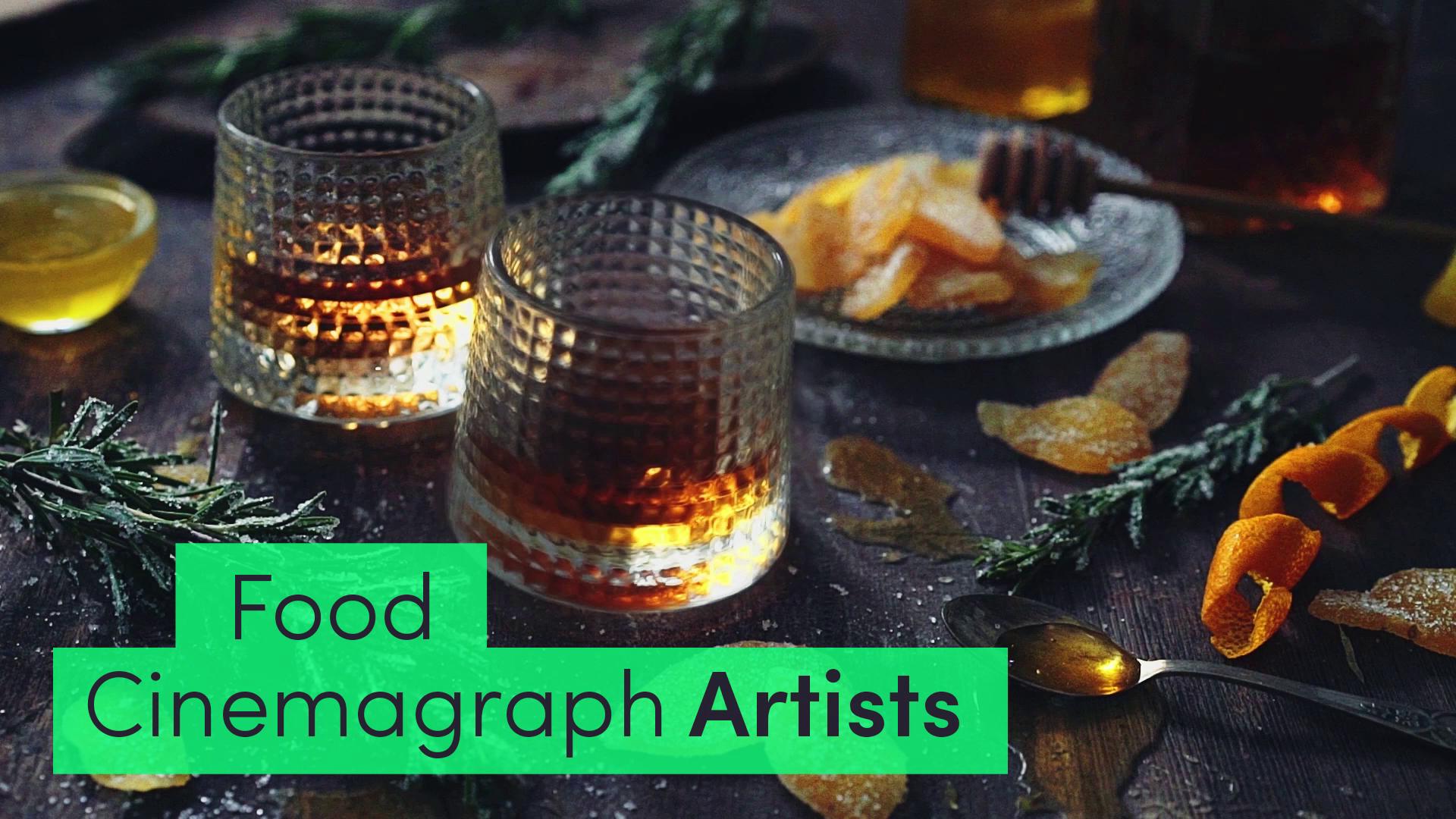Food Porn 2.0: The Most Delicious Cinemagraphs and Their Creators
Food photography has long been a crowd-pleaser. Now the genre is taking off in a new direction thanks to cinemagraphs, an exciting visual medium bringing food photos to life. To give you a taste of the finer points of creating food cinemagraphs, we asked gallereplay artists Daria Khoroshavina, Peter Chou, and Olena Balatska to share their recipe for success.
gallereplay: What initially compelled you to start making food cinemagraphs? What excites you about them?
Daria Khoroshavina: “Portraiture didn’t quite work for me because it involves a lot of organizational work . . . It’s fun, but with food it’s so much quicker: you go out to the market, grab something fresh and pretty, set it up in a home studio and you’re shooting already. It’s like an immediate creative satisfaction.”
Olena Balatska: “The first time I saw cinemagraphs was when I worked in a production studio. We were looking for a specialist for shooting beer. As it turned out there were no such specialists in our country. And so, I seriously thought about starting to create such cinemagraphs. Why not? . . . Food cinemagraphs impress me the most because they make you feel the real taste of food . . . They cause appetite, and this is the best advertising.”
Peter Chou: “Creating food cinemagraphs was a natural process for me. I’ve been a food specialist for more than twenty years, so when I started exploring cinemagraphs, it made sense to combine the two.”
gallereplay: Is there anything especially important to consider in terms of styling and composition when creating food cinemagraphs?
Peter Chou: “Once you have the composition, it’s a matter of determining the elements to be used in creating the movement for the cinemagraph. Popular elements used in food cinemagraphs are liquids that are poured, dripping or swirling; steam is also popular. The benefit of a cinemagraph over a still image is how the viewer is drawn into the image.
I believe the most successful examples of food imagery, regardless of still, motion or cinemagraph, are produced by those with a sensitivity to how food needs to look to be delicious . . . The food cinemagraph needs to be an outstanding still image first, if it isn’t, introducing a motion element to produce a cinemagraph is not likely to make it a winner.”
Daria Khoroshavina: “Well, you need to keep in mind that it’s a video and not everything can be retouched, and it usually takes longer to shoot, so it’s more difficult to keep the food looking good in the frame . . . Everything else is the same as with food photography, all the same tricks: toothpicks everywhere, every water/oil/juice drop is strategically placed with a brush, and every food piece is treated like a moody supermodel.
“Everything else is the same as with food photography, all the same tricks: toothpicks everywhere, every water/oil/juice drop is strategically placed with a brush, and every food piece is treated like a moody supermodel.”
– Daria Khoroshavina
Olena Balatska: “I think . . . [food cinemagraphs] should look as natural as possible. It’s like you left the table for a second, but everything continues to live its own life.”
gallereplay: Do you use any special equipment in your work? Are there any aspects of post-processing that are essential to producing a high-quality cinemagraph?
Olena Balatska: “For shooting I use a camera, a tripod, and lighting. For post-processing my favorite programs are After Effects and Photoshop. I’m working on the technique for each frame, as they all are different and each requires a special approach for processing.
Peter Chou: “In almost all my food cinemagraphs, I use a high-resolution still as the base image. A raw still image capture has significantly more information to work with, no still video frame comes close, not even from a RED camera.”
Daria Khoroshavina: “We have tripods and lights and all the light shaping accessories in our studio. Nothing too special. Except maybe our clips that we use for securing objects that are hovering over the set in the frame, like spoons and forks. I couldn’t find exactly what I needed so I made them myself with flexible wire and different sized clams . . . As for the post-processing, I think it’s easier done when you know that the final product is going to be a video file.”
gallereplay: Could you tell us about a current or upcoming project that you’re excited about? Is there any place you would love to have your work featured, or any brands/companies you’d be excited to work with?
Daria Khoroshavina: “I love Halloween projects. We never celebrate it in Russia, but for some reason we always shoot something crazy at this time of year. Finally, we’re justifying our project’s name (Kitchen Ghosts)! Oh, and I really look forward to holiday shoots, they get me into the holiday spirit at the end of October. I would also love to collaborate with a food enthusiast on a cookbook; that would be so much fun!”
Olena Balatska: “I’m happy to work with any companies . . . that are interested in making something new in the product promotion. It would be interesting for me to shoot a step-by-step narrative that reveals the idea of a product or brand.”
Peter Chou: “I’m still looking forward to a client wanting to produce cinemagraphs for a large outdoor screen or display, where it will slow people down with a striking visual and subtle cinemagraph movement. At this time, most examples are used in social media, which is more limited in budget and exposure.”
To see more mouthwatering food cinemagraphs from the aforementioned artists, check out their gallereplay pages here: Kitchen Ghosts, Peter Chou, and Olena Balatska.

